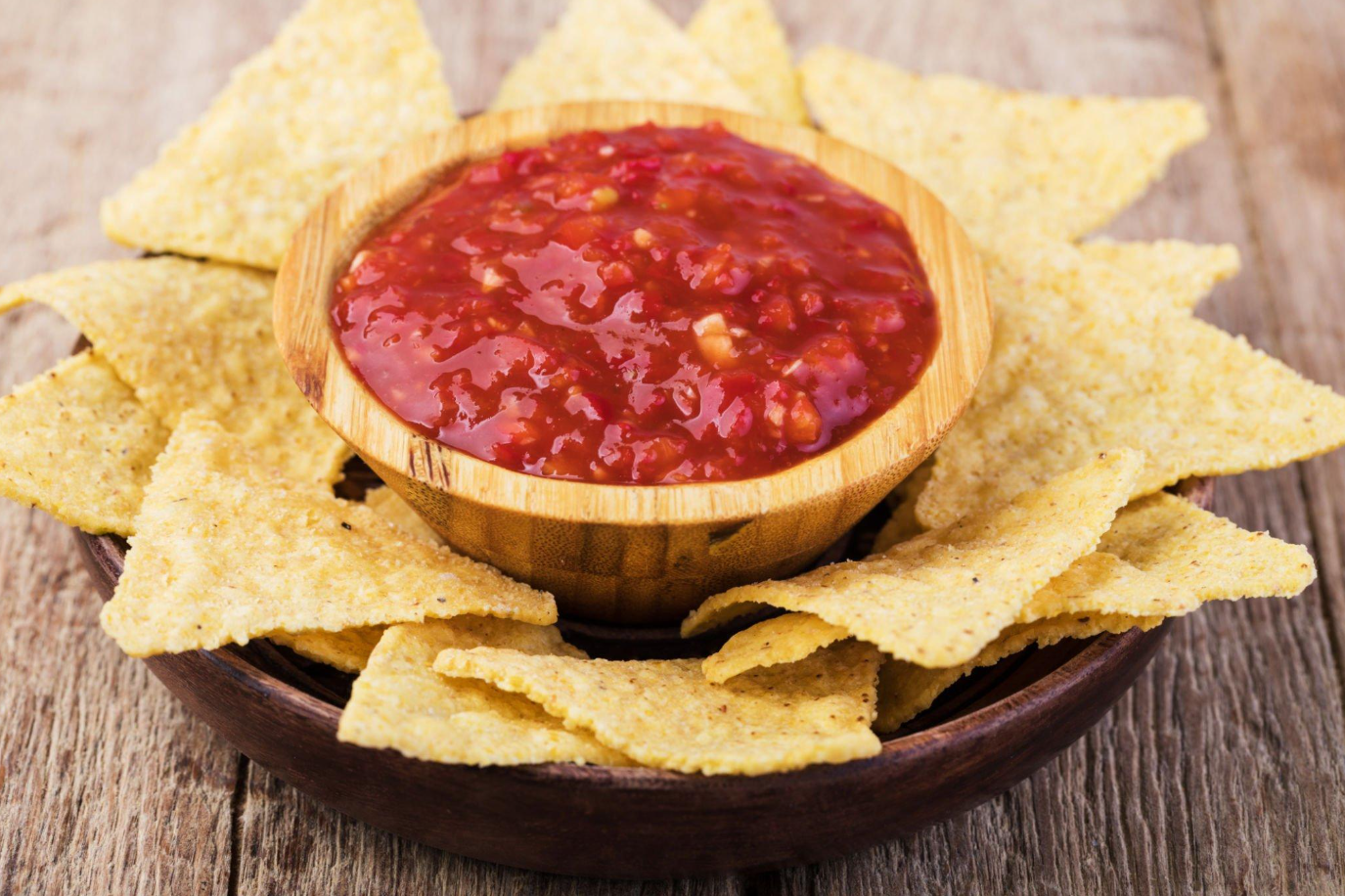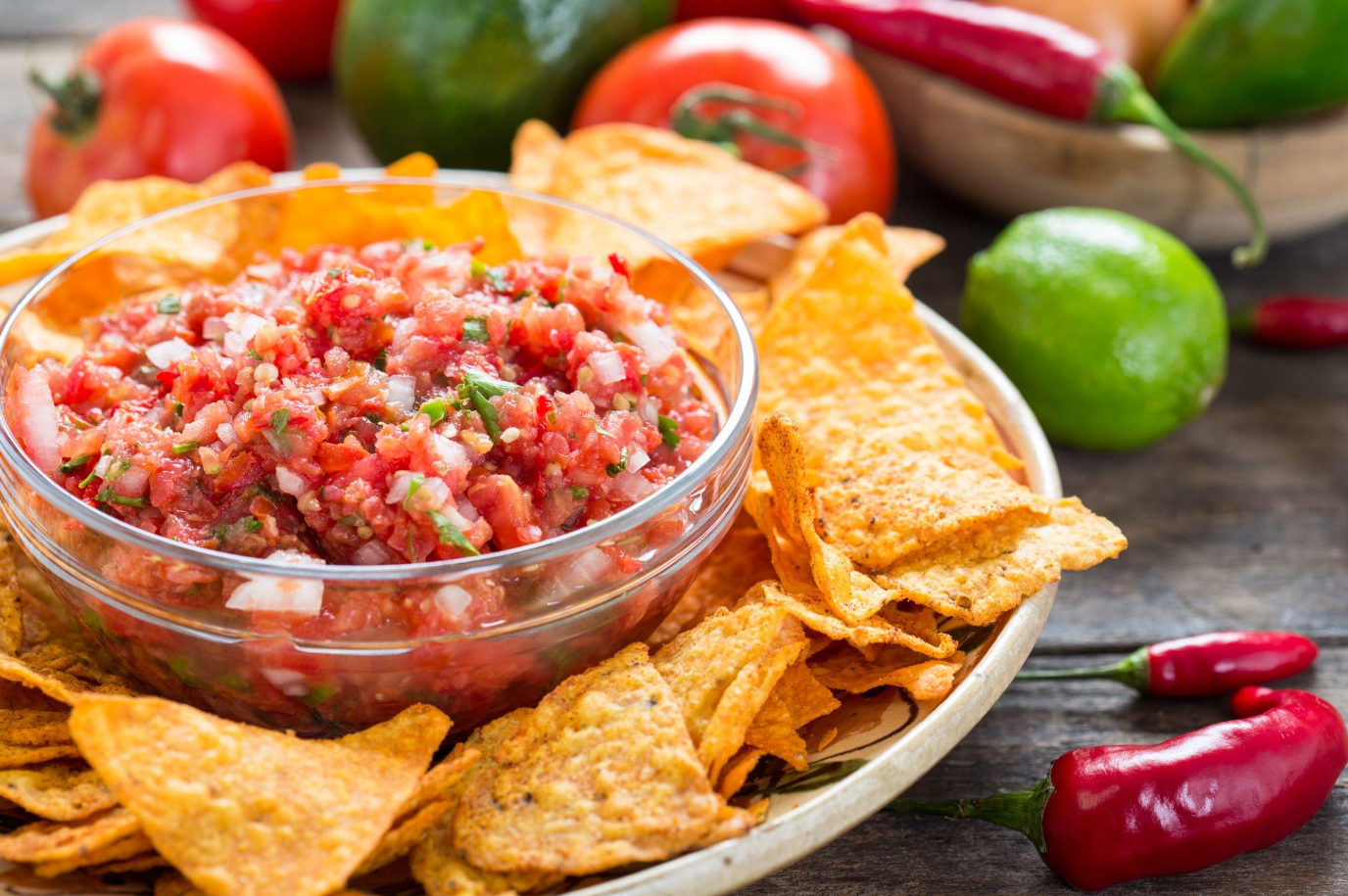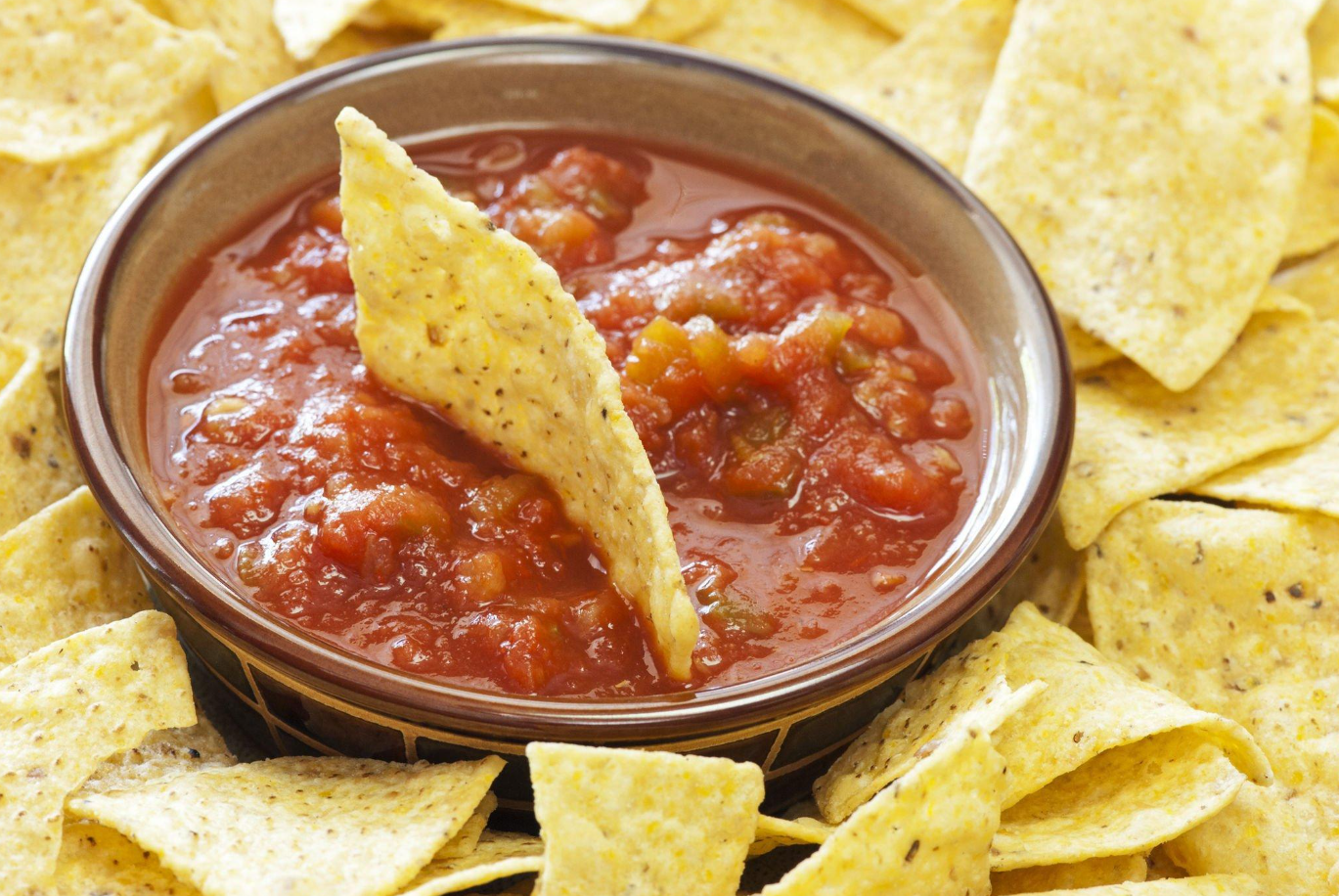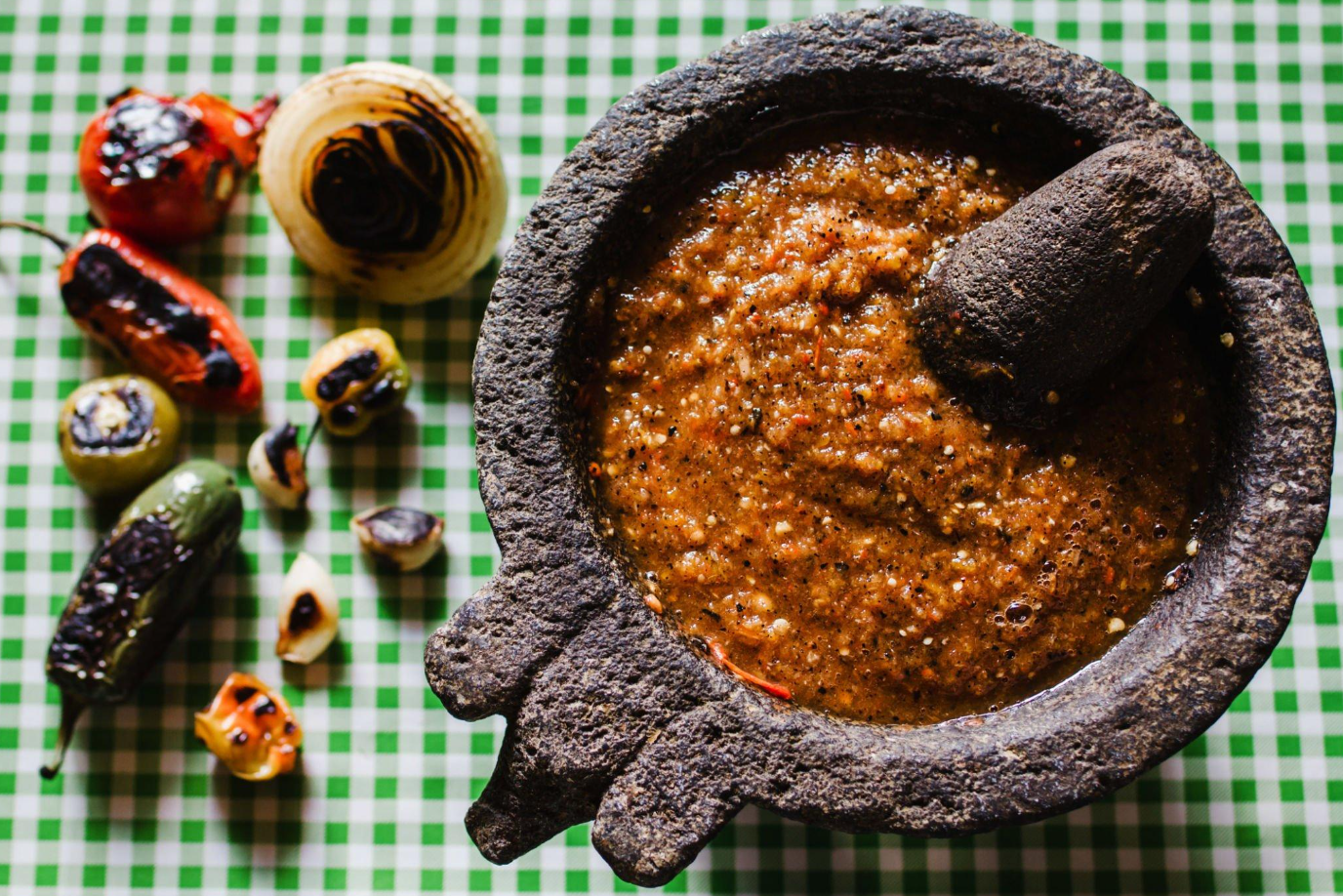
Introduction: Salsa’s Shelf Life in the Fridge
How Long Is Salsa Good For In The Fridge? This question often arises among culinary enthusiasts and casual cooks alike. Salsa, with its vibrant flavors and versatility, is a staple in many kitchens. Understanding its shelf life is crucial for both taste and health reasons. In this introduction, we delve into the factors affecting salsa’s longevity, particularly when stored in the fridge.
- Freshness Factors: The shelf life of salsa, especially fresh salsa, is influenced by several factors. These include the ingredients used, the presence of preservatives, and the method of preparation. Fresh ingredients without preservatives tend to have a shorter shelf life.
- Refrigeration Rules: Refrigeration is key to extending the life of salsa. Once opened, salsa’s exposure to air and potential contaminants is minimized when stored in a cold environment. This slows down the growth of bacteria and mold.
- Expiration Essentials: Understanding salsa expiration is vital. While store-bought salsa comes with a best-before date, homemade salsa lacks such clear indicators. It’s important to recognize the signs of spoilage, which can include changes in color, texture, and odor.
- Storage Strategies: Proper storage techniques can significantly impact how long salsa remains good in the fridge. This includes using airtight containers and ensuring the fridge’s temperature is consistently cold.
- Health Considerations: Consuming expired or spoiled salsa can lead to foodborne illnesses. It’s essential to err on the side of caution and discard salsa that shows any signs of spoilage.
The shelf life of salsa in the fridge can vary based on several factors. By understanding these, you can ensure that you enjoy your salsa not only at its most flavorful but also at its safest.
Homemade vs. Store-Bought Salsa
When it comes to salsa, the debate between homemade salsa and store-bought salsa is ongoing. Each type has its unique characteristics, influencing factors like taste, shelf life, and nutritional value. Here, we explore the key differences between these two salsa varieties.
Key Differences:
- Ingredients and Taste:
- Homemade Salsa: Typically made with fresh ingredients like ripe tomatoes, onions, cilantro, and lime juice. The freshness of these ingredients contributes to a more vibrant and robust flavor profile.
- Store-Bought Salsa: Often contains preservatives and additives to extend shelf life. These can slightly alter the taste, sometimes making it less fresh but more consistent.
- Shelf Life and Preservation:
- Homemade Salsa: Lacks preservatives, so it usually lasts for about 1-3 days in the fridge. Its shelf life is significantly shorter compared to its store-bought counterpart.
- Store-Bought Salsa: Thanks to preserving agents, it can last unopened for up to a year in the pantry and about 2-4 weeks in the fridge once opened.
- Nutritional Content:
- Homemade Salsa: Allows for control over the ingredients, making it easier to avoid added sugars and sodium. This can make homemade salsa a healthier option.
- Store-Bought Salsa: Nutritional content can vary widely. Some brands may add sugar or excessive salt, while others might offer low-sodium, organic options.
- Convenience and Cost:
- Homemade Salsa: Requires time and effort to prepare but can be more cost-effective, especially if using home-grown or bulk-purchased ingredients.
- Store-Bought Salsa: Offers convenience and time-saving benefits. It’s an easy, quick option for those who don’t have the time or inclination to make salsa from scratch.
- Customization:
- Homemade Salsa: Easily customizable in terms of spice levels, ingredients, and texture.
- Store-Bought Salsa: Limited to the flavors and textures available in stores, though there is a wide variety to choose from.
Conclusion:
Choosing between homemade and store-bought salsa depends on individual preferences and priorities, such as taste, health considerations, convenience, and shelf life. Both types have their pros and cons, making them suitable for different occasions and needs.
For more insights on salsa recipes and preservation methods, check out this article, which offers a comprehensive guide on the topic.
Storing Salsa in the Pantry
The key to prolonging the shelf life of salsa, particularly when it’s unopened, lies in understanding the best practices for Storing Salsa in the Pantry. This method of storage is crucial for maintaining the quality and safety of the salsa until it’s ready to be enjoyed.
Ideal Conditions for Pantry Storage:
- Temperature and Light:
- Store in a cool, dark place away from direct sunlight.
- Ideal temperature should be below room temperature, around 50-70°F (10-21°C).
- Humidity Control:
- Ensure the pantry is dry as high humidity can affect the jar’s seal and lead to spoilage.
Tips for Storing Unopened Salsa:
- Check Expiration Dates:
- Always look at the expiration or best-by date before purchasing.
- Unopened salsa shelf life can be up to a year or more, depending on the brand and ingredients.
- Proper Sealing:
- Ensure the jar’s seal is intact and unbroken before storing.
- A compromised seal can lead to contamination and spoilage.
- Avoiding Contamination:
- Keep the salsa away from raw foods or any source of contamination.
- Store in a separate section if possible to avoid cross-contamination.
Extending Shelf Life After Opening:
Once opened, the shelf life of salsa decreases significantly. However, there are ways to extend it:
- Refrigeration: After opening, refrigerate the salsa to extend its shelf life.
- Airtight Containers: Transfer to an airtight container if the original packaging is not resealable.
For more detailed guidelines on food storage, including salsa, the FDA’s Food Storage Guidelines provide valuable information. Additionally, National Center for Home Food Preservation offers extensive resources on preserving various food items, including salsa.
Storing Salsa in the Pantry effectively requires understanding the right conditions and practices. By following these guidelines, you can ensure that your unopened salsa remains fresh and safe to consume for as long as possible. Once opened, remember to switch to refrigeration and use airtight containers to maintain its quality.

Refrigerating Salsa: How Long Does It Last?
Understanding the shelf life of salsa once it’s in the refrigerator is crucial for both food safety and quality. The process of Refrigerating Salsa significantly extends its usability beyond what’s possible at room temperature. Here, we explore the key aspects of refrigerating salsa and how long it can be expected to last.
Key Considerations for Refrigerating Salsa:
- Temperature Consistency:
- Store salsa in a part of the fridge where the temperature is most stable, typically at the back, away from the door.
- Container Matters:
- Use an airtight container to store salsa after opening. This prevents contamination and preserves freshness.
- Avoiding Cross-Contamination:
- Always use a clean spoon to take salsa out of the container. This prevents the introduction of bacteria.
Shelf Life of Refrigerated Salsa:
- Store-Bought Salsa:
- Typically lasts between 2-4 weeks in the fridge after opening.
- The presence of preservatives helps in extending its shelf life.
- Homemade Salsa:
- Generally lasts for about 1-3 days in the fridge due to the absence of preservatives.
Signs of Salsa Spoilage:
- Visual Cues: Look for any mold or significant changes in color.
- Odor: A sour or unpleasant smell is a clear indicator that the salsa has gone bad.
- Texture: Any noticeable change in texture, such as excessive wateriness or thickness, can be a sign of spoilage.
For more detailed information on salsa spoilage signs and how to properly freeze salsa for extended shelf life, visit Dishes Wishes, which provides comprehensive guides on these topics.
Refrigerating Salsa is an effective way to extend its shelf life, but it’s important to be aware of the signs of spoilage. Store-bought salsa, with its preservatives, generally lasts longer than homemade salsa. Regardless of the type, proper storage practices, such as using airtight containers and avoiding cross-contamination, are key to maintaining the quality and safety of your salsa.
Freezing Salsa for Extended Shelf Life
Freezing Salsa is an excellent method to preserve its freshness for an extended period. This technique is particularly useful for homemade salsa, which lacks the preservatives found in store-bought varieties. By following proper freezing methods, you can enjoy salsa long after its typical refrigerator shelf life has expired.
Steps for Freezing Salsa:
- Preparation:
- Ensure the salsa is at room temperature before freezing.
- If it’s homemade salsa, let it cool down after preparation.
- Portioning:
- Divide the salsa into portions you’ll likely use in one serving. This prevents thawing and refreezing, which can degrade quality.
- Container Selection:
- Use freezer-safe containers or bags.
- Leave some space at the top of the container as salsa expands when frozen.
- Labeling:
- Label the containers with the freezing date. Salsa can be stored in the freezer for up to 2 months for optimal taste.
Thawing Frozen Salsa:
- Refrigerator Thawing:
- The safest way to thaw salsa is by transferring it from the freezer to the refrigerator.
- Allow it to thaw overnight.
- Quick Thawing:
- For a quicker method, place the sealed container in a bowl of cold water.
- Change the water every 30 minutes to maintain a safe temperature.
- Post-Thawing Tips:
- After thawing, if the salsa appears watery, stir it to redistribute the ingredients.
- Consume thawed salsa within a day or two for best quality.
Freezing Salsa is a straightforward and effective way to extend its shelf life. By following these steps, you can ensure that your salsa retains its flavor and texture as much as possible. Remember, while freezing can preserve salsa for longer periods, the thawing process is just as crucial to maintain its quality. Whether you’re a fan of homemade or store-bought salsa, these freezing and thawing salsa techniques will help you enjoy your favorite condiment whenever you crave it.

Recognizing Spoiled Salsa
Being able to identify when salsa has gone bad is crucial for food safety. Recognizing Spoiled Salsa involves paying attention to several signs that indicate it’s no longer safe to consume. Here are the key indicators to look out for:
Signs of Spoilage:
- Color Changes:
- Look for any significant changes in color. Fresh salsa should retain the vibrant color of its ingredients.
- A dull, faded, or brownish color can be a sign of spoilage.
- Mold Growth:
- Any visible mold, which can appear as fuzzy spots in various colors, is a clear indicator that the salsa should be discarded.
- Mold can present serious health risks if ingested.
- Off Smell:
- A fresh salsa should have a pleasant, spicy, and tangy aroma.
- Any sour, foul, or otherwise off-putting odors are signs that the salsa has gone bad.
- Texture Changes:
- Fresh salsa typically has a certain consistency, depending on its type.
- If the salsa becomes overly watery or excessively thick, it may be spoiled.
- Taste Test:
- If the salsa passes the visual and smell tests, a small taste test can be the final check.
- Any sour or unpleasant taste is a sign that the salsa should not be consumed.
Health Considerations:
- Consuming spoiled salsa can lead to foodborne illnesses.
- Symptoms can include stomach upset, nausea, vomiting, and diarrhea.
- It’s always better to err on the side of caution and discard salsa if there’s any doubt about its freshness.
Recognizing Spoiled Salsa is an important skill in the kitchen. By being aware of these visual indicators and other signs of spoilage, you can avoid the potential health risks associated with consuming bad salsa. Always trust your senses – if something seems off, it’s best to throw it away. Remember, when in doubt, throw it out!
Tips for Maximizing Salsa’s Shelf Life
Ensuring your salsa remains fresh and flavorful for as long as possible requires more than just refrigeration. Maximizing Salsa’s Shelf Life involves a combination of proper handling, storage techniques, and understanding how to prevent spoilage. Here are some essential tips to help extend the life of your salsa.
Proper Storage Techniques:
- Airtight Containers:
- Store salsa in airtight containers to minimize exposure to air, which can accelerate spoilage.
- Glass jars are preferable as they don’t absorb flavors and are easy to clean.
- Refrigeration:
- Always refrigerate salsa promptly after use. The cold temperature slows down the growth of bacteria.
- For homemade salsa, cool it to room temperature before refrigerating to avoid condensation.
- Avoiding Cross-Contamination:
- Use a clean spoon each time you serve salsa to prevent introducing bacteria from other foods.
- Never dip directly from the jar if you’re not going to finish it in one sitting.
Handling and Usage:
- Stir Before Use:
- Stir the salsa before serving to redistribute the ingredients and flavors.
- This is especially important for salsas that have been stored for a while.
- Portion Control:
- Only take out the amount of salsa you plan to use to avoid warming the entire batch repeatedly.
- Repeated temperature changes can degrade the quality of the salsa.
- Regular Checks:
- Periodically check your salsa for signs of spoilage, such as off smells or mold.
- Discard any salsa that shows signs of going bad, as it poses health risks.
Additional Preservation Methods:
- Freezing:
- For long-term storage, consider freezing salsa. This method is particularly useful for homemade salsa.
- Freeze in small portions for easy thawing and use.
- Mind the Expiry Date:
- For store-bought salsa, always keep an eye on the expiry date and try to consume it before then.
- While some salsas may last a little longer, the expiry date is a good indicator of when the quality will start to decline.
By following these tips for Maximizing Salsa’s Shelf Life, you can enjoy your salsa at its best for longer. Remember, the key is in proper handling and storage, along with being vigilant about avoiding cross-contamination. With these practices in place, you’ll ensure that every scoop of salsa is as fresh and delicious as possible.

Salsa Preservation FAQs
When it comes to preserving salsa, there are many questions that both home cooks and salsa enthusiasts frequently ask. Understanding the best practices for Salsa Preservation is key to enjoying this versatile condiment at its best. Below are some of the most common questions and their answers.
How Long Can Homemade Salsa Last in the Fridge?
- Homemade salsa typically lasts for about 1-3 days in the fridge.
- The lack of preservatives and the freshness of the ingredients contribute to its shorter shelf life compared to store-bought varieties.
Is It Safe to Freeze Salsa?
- Yes, freezing salsa is a safe and effective way to extend its shelf life.
- It’s best to use salsa within 2 months of freezing for optimal flavor and texture.
- Remember to thaw it safely in the refrigerator or using a cold water bath.
Can You Tell if Salsa Has Gone Bad?
- There are several signs that indicate salsa has spoiled:
- Mold growth or any visible fungal development.
- Off-putting smell or an unusual change in color.
- A noticeable alteration in texture, such as becoming too watery or thick.
What Is the Best Way to Store Salsa After Opening?
- Store opened salsa in an airtight container in the refrigerator.
- This method helps to prevent contamination and maintain freshness.
- Ensure the salsa is covered properly to avoid exposure to air.
How Can Cross-Contamination Be Prevented When Using Salsa?
- Always use a clean spoon to serve salsa, especially if you plan to store it again.
- Avoid dipping directly into the salsa jar with used utensils or food items.
- This practice helps in preventing the introduction of bacteria and prolongs the salsa’s shelf life.
Are There Any Health Risks Associated with Consuming Spoiled Salsa?
- Consuming spoiled salsa can lead to foodborne illnesses.
- Symptoms may include stomach discomfort, nausea, and vomiting.
- It’s crucial to discard any salsa that shows signs of spoilage to avoid health risks.
Does the Type of Salsa Affect Its Shelf Life?
- Yes, the shelf life of salsa can vary depending on its type:
- Chunkier salsas with less liquid may last a bit longer than more watery varieties.
- Salsas with dairy or seafood ingredients have a shorter shelf life and require careful handling.
These Salsa Preservation FAQs cover the essential aspects of storing and handling salsa. By adhering to these guidelines, you can ensure that your salsa remains fresh and safe to consume. Remember, when it comes to salsa, freshness is key to both taste and safety.
Conclusion and Best Practices
In conclusion, understanding and implementing Salsa Storage Best Practices is essential for anyone who enjoys this versatile and flavorful condiment. Throughout this article, we’ve explored various aspects of salsa preservation, from refrigeration to freezing, and identified key signs of spoilage. Here, we summarize the main points and provide final recommendations to ensure your salsa remains fresh and safe to consume.
Summary of Key Points:
- Shelf Life: The shelf life of salsa varies depending on whether it’s homemade or store-bought, with homemade salsa typically lasting 1-3 days in the fridge and store-bought salsa lasting 2-4 weeks after opening.
- Freezing Salsa: Freezing is a viable option for extending salsa’s shelf life, especially for homemade varieties. Use within 2 months for best quality.
- Recognizing Spoilage: Be vigilant for signs of spoilage, such as color changes, mold growth, off smells, and texture changes.
- Proper Storage: Always store salsa in airtight containers and refrigerate promptly after use.
Final Recommendations:
- Airtight Containers: Store salsa in airtight containers to minimize exposure to air and contaminants.
- Consistent Refrigeration: Keep salsa refrigerated consistently, and avoid frequent temperature changes.
- Avoid Cross-Contamination: Use clean utensils to serve salsa and avoid direct dipping to prevent bacterial growth.
- Regular Checks: Periodically check your salsa for any signs of spoilage and discard if any are present.
- Mind the Expiry Date: For store-bought salsa, adhere to the expiry date as a guideline for salsa shelf life.
By following these best storage practices, you can enjoy salsa at its best quality and flavor while minimizing the risk of foodborne illnesses. Remember, when it comes to salsa, freshness and proper storage are key. Whether you’re a fan of spicy, tangy, or mild salsa, these practices will help you savor every bit of your favorite condiment safely and deliciously.



